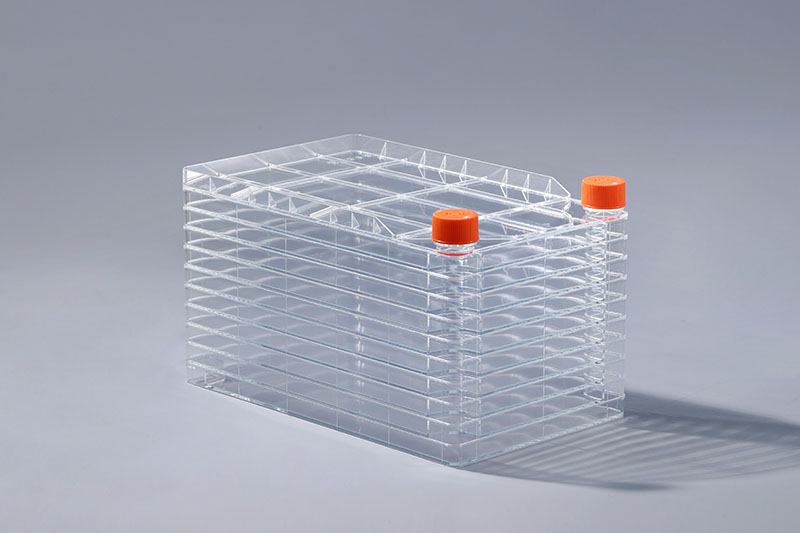은 대규모 세포 배양에서 일반적으로 사용되는 소모품입니다. 그 구조는 하나 이상의 층으로 구성되며 최상층에는 두 개의 관류 포트가 제공됩니다. 이러한 복잡한 구조를 생산하기 위해 어떤 공정이 사용됩니까?cell 공장에서 채택한 사출 성형 공정은 주로 다음 단계를 포함합니다.cell factory
①Pre-molding 공정:
Pre-molding 공정 플라스틱 재료는 사출 성형 요구 사항을 충족하기 위해 유리 상태에서 점성 유체 상태로 재료를 변환하기 위해 배럴에서 가열, 운송, 압축, 전단, 혼합 및 균질화된다는 것입니다.
②사출 충전 공정:
사출 충전 단계에서 스크류는 사출 실린더의 추력에 따라 노즐, 몰드 러너 및 게이트를 통해 저장실의 용융물을 캐비티에 주입합니다.
③ 압축 및 압축 과정:
수축으로 인해 부품이 비워진 부피를 채우기 위해 사출 성형을 계속합니다.
④냉각 및 설정 과정:
보유 압력이 종료된 후 게이트가 동결됩니다. 제품은 냉각 및 경화 기간을 거칩니다.
⑤ 배출 및 픽업 과정:
일정 시간 냉각 후 제품은 일정한 강성과 강도를 갖습니다. 부품은 금형의 이젝터 핀에 의해 사출 금형에서 사출됩니다.
셀 팩토리 최상층의 충전 포트와 본체는 일체로 사출 성형됩니다. 이 프로세스는 제품이 더 나은 밀봉 성능과 우수한 강도를 갖도록 할 수 있습니다. 위는 셀 공장의 생산 과정입니다. 또한 사출 성형 공정은 폴리올레핀, 폴리아미드, 폴리옥시메틸렌, 폴리카보네이트 및 기타 재료의 가공에도 적합합니다.
The filling port and the main body of the top layer of the cell factory are integrally injection-molded. This process can ensure that the product has better sealing performance and good strength. The above is the production process of the cell factory. In addition, the injection molding process is also suitable for the processing of polyolefin, polyamide, polyoxymethylene, polycarbonate and other materials.
The FAI climbed 5.9 percent year-on-year in the first 11 months of 2018, quickening from the 5.7-percent growth in Jan-Oct, the National Bureau of Statistics (NBS) said Friday in an online statement.
The key indicator of investment, dubbed a major growth driver, hit the bottom in August and has since started to rebound steadily.
In the face of emerging economic challenges home and abroad, China has stepped up efforts to stabilize investment, in particular rolling out measures to motivate private investors and channel funds into infrastructure.
Friday's data showed private investment, accounting for more than 60 percent of the total FAI, expanded by a brisk 8.7 percent.
NBS spokesperson Mao Shengyong said funds into weak economic links registered rapid increases as investment in environmental protection and agriculture jumped 42 percent and 12.5 percent respectively, much faster than the average.
In breakdown, investment in high-tech and equipment manufacturing remained vigorous with 16.1-percent and 11.6-percent increases respectively in the first 11 months. Infrastructure investment gained 3.7 percent, staying flat. Investment in property development rose 9.7 percent, also unchanged.
 English
English



















































